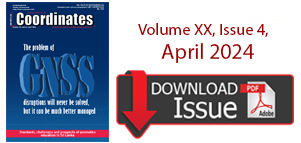| Mapping | |
End users used to GPS navigation, expect the same service on indoors
Users expect free and effortless service with low latency and low battery and data usage |
 |
|
Our end users are used to GPS navigation, and expect the same service on indoors – a blue dot on their own mobile screen accurate to a few meters. Furthermore, they expect free and effortless service with low latency and low battery and data usage. Hence, we support both main mobile OS’s and only use data from the standard onboard radio and motion sensors. Latency, traffic and battery drain is reduced by running efficient on-device algorithms (as opposed to in the cloud). Currently a dedicated application or service is required to enable mobile navigation, however if future browsers enable radio api’s we could provide navigation directly in the browsers.
The cost of providing this typically is covered by venue owners who wants to improve customer experience, increase engagement with their venues, or increase accessibility. As a side benefit the process produces very useful analytics data of high interest to the venue owners. A general way of lowering the threshold to venue owners to consider indoor navigation would be availability of open standard displayable map and point of interest data.
A known radio infrastructure allows for a fast location fix that can be improved with subsequent observations. Adding motion data can significantly improve the estimated trajectory. Only Bluetooth is available in an open API for both main mobile OS’s, but Wifiis usable as an alternative source on Android. However, in our experience obtainable quality is higher with a dedicated infrastructure rather than simple opportunistic use of available Wifiaccess points. Furthermore, mobile access points and non-standard behaviors such as mac obfuscation and adaptive transmission power further complicate the opportunistic approach. Using cheap off the shelf Bluetooth beacons and mobile phones currently is the most cost efficient way to bring indoor navigation to our customers. Other signals such as light systems, ultra wide band, custom Wifiadditions, etc rapidly add to the cost and dramatically reduces the available user base. An additional benefit of beacons is that they can be discovered in the background which gives rough location useful for triggering proximity events and generating complement data for analytics when the user is not navigating. Thus, we believe the introduction of standardized beacons has significantly improved reliability in indoor navigation. Still for many reasons, the installation of hardware remains an obstacle for the wide spread use of beacons. This can be due to lack of experience and unawareness of potential benefits, but also fear of technology lock-in, installation cost, and maintenance considerations. Aside from addressing these issues by making documentation, consulting customers, and working with quality beacon providers, we are also we are also working on improved methods to design, deploy and maintain beacon infrastructures. Furthermore, we are following developments made possible in recent Bluetooth 5 and Wifistandards with great interest, and hope to make use of new technology as it appears.
While beacons primarily are intended for proximity events (~10-20m accuracy), radio fingerprinting methods allow for obtaining high accuracy. Fingerprinting methods rely on radio maps with many point measurements of beacons and signal strengths. Traditionally these measurements are made by stopping at each point and collecting radio signals for around one minute. This approach is very slow and only feasible for smaller scale solutions. The radio maps also must be kept up to date with the current environment to give reliable results. For this purpose we developed our SLAM system. We see a lot of potential in using crowd data and are working employing it to replace the initial mapping step.












 (3 votes, average: 4.00 out of 5)
(3 votes, average: 4.00 out of 5)



Leave your response!